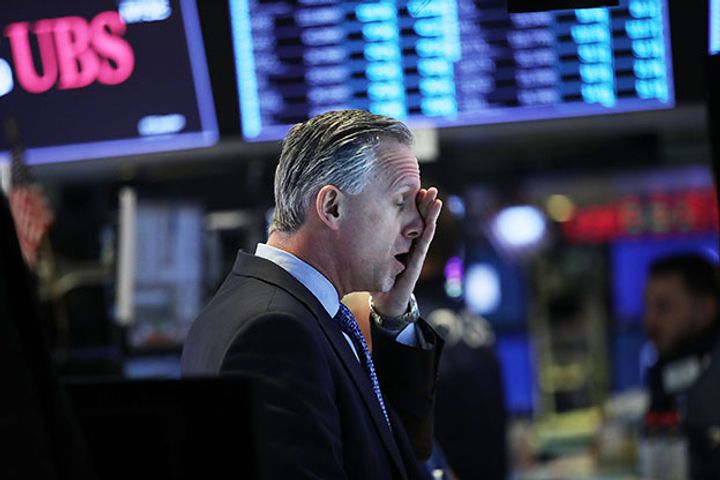 Program Trading Contributes to US Stock Market Plunge, Leading to Panic Selling, Say Market Insiders
Program Trading Contributes to US Stock Market Plunge, Leading to Panic Selling, Say Market Insiders(Yicai Global) Feb. 7 -- As the US stock markets plunged over the past few days, investors and market insiders try to reposition themselves in an effort to estimate what may follow. Although the global stocks have rebounded today, concerns remain as volatility continues in the markets.
"I have the feeling that we are experiencing a financial crisis. Even in 2007, the options market was not as crazy as it is now. Everyone is seeking for hedging," a US stock trader told Yicai Global after the US stock market plunge over the past two days.
The US stock markets fell at a staggering pace since Feb. 2. The S&P 500 index closed lower, down 4.10 percent, its biggest daily decline in nearly seven years; the Dow Jones ended down 4.61 percent, its biggest daily loss since 2011; the Nasdaq fell 3.78 percent yesterday.
Regarding the synchronous plunge in the global markets triggered by the US stock market slump, several insiders from institutional investors told Yicai Global that global economic fundamentals remain sound, and the slump was mainly caused by technical overbought conditions, liquidation of exchange-traded funds, systematic position reduction by commodity trading advisor funds, program trading, computer algorithms and high-frequency quantitative trading rather than by any macro event or a sudden withdrawal of investors, given rising expectations for quantitative tightening by the US Fed.
Unlike trading on Feb. 2 when the market still felt that a decline could be conducive and it may be a good time to buy on the dips, investors panicked on Feb. 5. "The Monday plunge has wiped out the dividend of US tax reform accrued since last December," said Situ Jie, a senior US equity trader and a partner at Qingxi Capital.
"Things were good when the trading day began. But all of a sudden, panic selling started," said Randy Frederick, managing director of trading and derivatives at Charles Schwab & Co. Inc. "Sell-offs are huge. It seems that institutions are dumping stocks."
"Liquidation of ETFs [Exchange-traded fund] led to heightened sell-off pressures," Zhu Kaiwen, US stock quantitative investment director at Hongyuan Futures Co., told Yicai Global.
Others believe systematic position reduction by CTA [Commodity trading advisor] funds also contributed to the global stock market plunge. Globally, CTA funds hold stocks worth USD190 billion, including USD70 billion of US equities. Institutions estimate that CTA funds yesterday sold some USD14 billion worth of shares in the US and USD38 billion globally.
"Pressure from over-valuation and technical overbought conditions accumulated earlier has eased somewhat after the market plunge, with valuation falling to its mid-2017 level," said Liu Gang, an overseas strategy analyst at China International Capital Corp., commenting on the future development of the US stock market. "In other words, it has wiped out the valuation increase accumulated due to rising expectations for US tax reform since last September."
Liu believes that overbought conditions have eased substantially in the US stock market, which is supported by fundamentals (corporate earnings) in the medium term, but valuation pressure still exists since interest rate inflection point has not emerged yet. Compared with growth stocks, financial shares that benefit from rising interest rates and value and cyclical stocks that benefit from an improving economy may perform better.